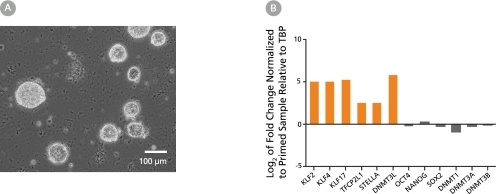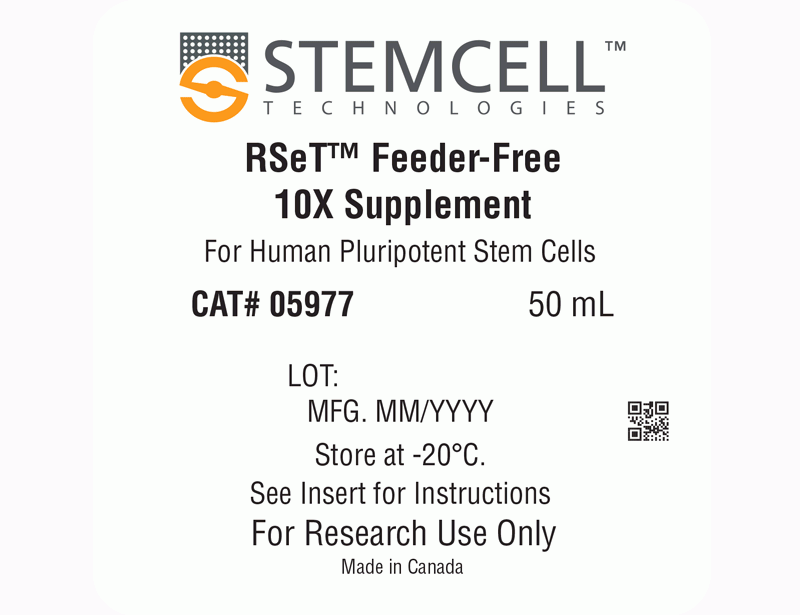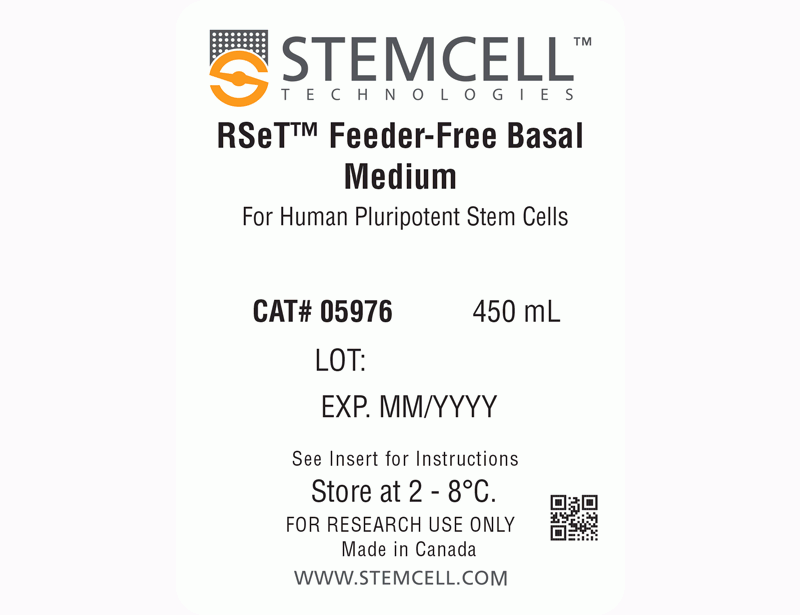概要
技术资料
| Document Type | 产品名称 | Catalog # | Lot # | 语言 |
|---|---|---|---|---|
| Product Information Sheet | RSeT™ Feeder-Free Medium | 05975 | All | English |
| Safety Data Sheet 1 | RSeT™ Feeder-Free Medium | 05975 | All | English |
| Safety Data Sheet 2 | RSeT™ Feeder-Free Medium | 05975 | All | English |
数据及文献
Data

Figure 1. Schematic of Reversion of Primed to Naïve-Like hPSCs with RSeT™ Feeder-Free
Primed hPSCs are plated as aggregates in mTeSR™1. On day 1, mTeSR™1 is replaced with RSeT™ Feeder-Free, the cultures are transferred to hypoxic conditions, and the medium is exchanged every other day. By day 4 or 5, the colonies are generally large enough to be passaged. During the initial culture in RSeT™ Feeder-Free, colonies expand and begin to adopt a tightly-packed, highly domed morphology characteristic of naïve-like stem cells with smooth and refractive colony edges as early as passage 1.

Figure 2. hPSCs Maintained in RSeT™ Feeder-Free are Reverted to a Naïve-Like State and Express High Levels of Naïve-Associated Genes
(A) A representative image of hPSCs that reverted to a naïve-like state after being cultured in RSeT™ Feeder-Free for 1 passage. During reversion, colonies change from a flat morphology to a domed morphology characteristic of naïve-state hPSCs. (B) Expression of naïve-associated genes (KLF2, KLF4, KLF17, TFCP2L1, STELLA, and DNMT3L) in hPSCs that were reverted to a naïve-like state in RSeT™ Feeder-Free. Expression levels were measured by qPCR and normalized to levels in primed hPSCs.

 网站首页
网站首页




